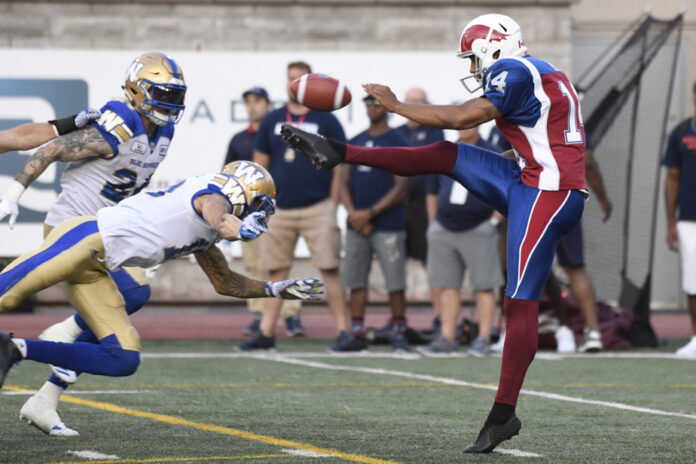In football, why are kickoffs taken by kickers instead of punts, who would normally be assumed to have more power?
It’s a good question, but it’s also because there’s a precision aspect to the kickoff; If necessary, the kicker may be tasked with attempting to kick the ball before the end zone, in order to force a kick return. This is without forgetting another aspect of special teams play which is very important: the short kick, used in emergency situations at the end of the game. It is the precision kicker who has the best chance of making such a kick, without a shadow of a doubt.
What number was worn the least by National Hockey League players, all clubs combined?
After scouring the Hockey Reference site, it seems that number 0 was worn only by Neil Sheehy of the Hartford Whalers in 1988. Its variation, 00, was chosen twice, notably by Quebec goalie Martin Biron, with the Buffalo Sabres, in 1995-1996. There is also the 99 (three occurrences) and the 66 (six), associated with iconic players – the 99 is also retired throughout the league. And finally there is the 69 which has only been used four times. However, I will leave you to figure out why it is not more popular.
In recent years, teams have pulled their goalkeeper late in a match, even when they are two goals behind. I would be curious to know the success rate of this strategy. Has it ever happened that a team scored two goals in this circumstance?
No need to look too far: in his first game of the season, the Canadian allowed two goals at the very end of the game to the Maple Leafs, while the Toronto goaltender was on the bench. So yes, there are precedents. As for the chances of success, a very precise article, published on a blog last March, estimated them at 15% – a little less than one in six times, therefore. Let us also mention that this season, in the NHL, as of November 27, he had scored 46 goals while the attacking team no longer had a goalie. Conversely, 104 pucks went into an empty net. Still, statistics don’t tell the whole story; losing by one goal or two goals is still a defeat, so this strategy, despite its low success rate, is often inconsequential.
Can you tell me the Canadian’s power play success percentage since the appointment of Alex Burrows as coach of the five-man attack?
From Burrows’ hiring on February 24, 2021, through November 27, 2023, we’re talking 16% in 223 games. That output is good for 31st in the NHL. It’s obviously very weak… like the team in the same interval. The CH maintained a ranking points rate of .404, in 30th place. It’s probably not just the numerical advantage’s fault.
I’m trying to find out what the distribution of purses was between the team players and the federation at the Billie Jean King Cup! I know the team got $2.4 million. Does each player receive the same amount?
I asked Tennis Canada your question. The director of the National Bank of Montreal Open, Valérie Tétreault, tells me that the federation leaves it up to the players to determine between themselves how they wish to share the purse. “There are two options; that of sharing equally among all the players on the team or even with a bonus system according to the number of matches played and matches won,” she wrote to me. The option chosen by the players is, however, confidential.















